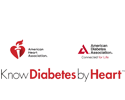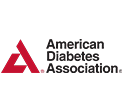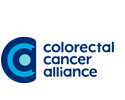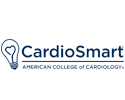CAR T-Cell Therapy Gave Me Back My Life
Editor’s Note: This week, Real World Health Care shares an inspirational story of a woman who was diagnosed with lymphoma and received treatment with CAR T-cell therapy. “CAR-T Cell Therapy Gave Me My Life Back” is reprinted with permission from the Association of Community Cancer Centers. Updated in April 2020, it was originally published on July 11, 2018 in ACCCBuzz Blog.
A Cancer Odyssey
When Robyn Stacy-Humphries, MD, was 48 years old, she discovered a supraclavicular lymph node. As a radiologist whose expertise lies in oncologic imaging, she knew right away that this discovery was “bad news,” since lymph nodes in this location are usually associated with lung, gastric, and ovarian cancer, as well as lymphoma. Ultrasound and a CT scan showed several tiny lymph nodes in her neck and core biopsy confirmed diffuse large B-cell lymphoma (DLBCL).
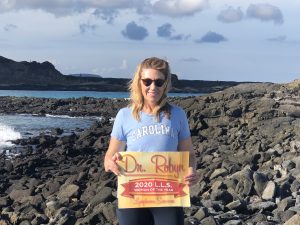
Dr. Robyn Stacy-Humphries
Although the news was devastating, Robyn knew that large cell lymphoma is potentially treatable with standard chemotherapy of RCHOP (rituximab, cyclophosphamide, doxorubicin, vincristine, and prednisone). She remembers RCHOP as “tolerable” and was able to work during treatment, having chemotherapy on a Friday and going back to work on Tuesday.
Robyn was declared in remission after three cycles of treatment but completed the full six cycles of RCHOP as per guidelines. Four years later she felt another lymph node in her neck, which was biopsy-confirmed as relapsed DLBCL. This news was “pretty devastating, because with even the first relapse your chance of survival — let alone cure — decreases dramatically.”
This time Robyn was treated with salvage chemotherapy followed by autologous stem cell transplant (ASCT) and external beam radiation. She describes the two cycles of chemotherapy as “brutal,” but continued working until she received ASCT. Treatment was complicated by sepsis and a stay in intensive care. Robyn remembers being “delirious for about two days, and that was frightening.” Following discharge on IV antibiotics, Robyn had head and neck radiation, after which she was unable to swallow solid food and her BMI plummeted from 22 kg/m2 to around 16 kg/m2.
Three and a half months after the transplant, Robyn was in complete remission. However, in April 2016, following a trip to the Galapagos Islands, the lymphoma relapsed a third time. This is a bleak prospect for any patient as the only option for treatment is allogeneic transplant. But Robyn has no siblings and knew she did not have a match.
What Is CAR-T Cell Therapy?
The annual report of the American Society for Clinical Oncology (ASCO) named chimeric antigen receptor (CAR) T-cell therapy 2018 Advance of the Year.1 This accolade came four months after the U.S. Food and Drug Administration (FDA) approved tisagenlecleucel for the treatment of patients up to age 25 years old, with refractory or second or later relapse B-cell precursor acute lymphoblastic leukemia.2
This first approval for adoptive cell immunotherapy represented a major innovation for patients with hematologic malignancies and was followed by approval of a second CAR T-cell therapy, axicabtagene ciloleucel, to treat patients with several types of relapsed or refractory large B-cell non-Hodgkin lymphomas (NHL), including diffuse large B-cell lymphoma (DLBCL), after two or more lines of systemic therapy.3 The indication for tisagenlecleucel has also now expanded to include the treatment of adult patients with relapsed or refractory large B-cell lymphoma after two or more lines of systemic therapy.
CAR T-cell therapy involves filtering a patient’s own blood to remove T-cells and engineering them by gene transfer technology to express chimeric antigen receptor. These CAR T-cells are expanded in number and re-infused to the patient, who has typically undergone preconditional lymphodepletion with chemotherapy.
The CAR receptor binds to the target antigen on the tumor cell, activates the signaling domains, and initiates CAR T-cell cytokine release, anti-tumor activity, expansion, and persistence.4-6 The re-infused CAR cells expand in vivo, amplify the anti-tumor response, and facilitate ongoing tumor surveillance.
Proactivity Pays Dividends
Because Robyn is a physician, she had prior knowledge of Phase 1 studies investigating CAR T-cell therapies and had been proactively researching Phase 2 trials via clinicaltrials.gov. In 2015 no trials were available for patients who failed first-line therapy, but by April 2016 Robyn had failed first and second-line therapy. She again researched clinicaltrials.gov and discovered that she met eligibility criteria for every chimeric antigen trial in the United States at that time. The catch was that all the trials were full.
After emailing contacts identified from the clinicaltrials.gov website, Robyn discovered a Facebook site called Physician Moms Group, which has 65,000 members across the world. She posted that she was a lymphoma patient in search of a CD-19 CAR-T trial but was unable to find a space. That afternoon, after a friend bumped her post up the Facebook feed, Samantha Jaglowski, MD, MPH, a hematologist in Ohio, posted that she had a spot that had just opened up in a Phase 2 trial at The James Cancer Center in Ohio.
“Like Ice Cubes Melting”
CAR T-cell therapies are currently limited to specialized treatment centers like The James that are involved in clinical trials and certified under a Risk Evaluation and Mitigation Strategy (REMS). Two weeks after Robyn’s relapse was diagnosed and four days after learning about this open spot, she flew to Ohio and was accepted into the trial, returning two weeks later to have her T-cells harvested.
There was a slight hitch, however. During the manufacturing process, Robyn’s cells expanded in number above the limit for dosing, so her case had to be reviewed by the FDA, which delayed treatment, creating considerable anxiety for Robyn and her husband. While she waited for FDA approval, Robyn received bridging chemotherapy with ibrutinib, which put her into remission.
Prior to commencing CAR T-cell treatment in September 2016, she had to stop her ibrutinib therapy and, with no treatment, her lymphoma returned with several palpable lymph nodes. Yet, Robyn recalls, within 24 hours of being infused with high-dose T-cells “the lymph nodes were half their size; within three days they were gone. It was like ice cubes melting.”
Managing Adverse Effects and Care Coordination
The initial side effects from CAR T-cell therapy can be significant. CAR T-cell therapies carry a black box warning for cytokine-release syndrome (CRS) and neurological events. Patients may also develop macrophage activation syndrome, hemophagocytic lymphohistiocytosis, tumor lysis syndrome, cytopenia, and febrile neutropenia.7-10
Although Robyn developed CRS with fever and hypotension five days after infusion and was readmitted to the hospital for adverse event management, she emphasizes that her side effects were relatively minor. Overall, she spent only four days as an inpatient (one for inpatient infusion and three for adverse event management) and the rest of her therapy as an outpatient. Since treatment Robyn has had three upper respiratory infections that were all treated with antibiotics as an outpatient.
Robyn says this is typical of other patients she has spoken with via a Facebook group (CAR-T Cell Patients and Carers) that she hosts for people who have been in clinical trials across the United States. Although the initial side effects can be significant, almost everybody returns to normal, and compared with radiation or stem cell transplantation, Robyn feels that CAR T-cell side effects are less intense. In fact, she continues to have permanent side effects from high-dose chemotherapy and radiation.
“I have osteoporosis and muscle mass loss from extensive chemotherapy,” she says. Due to radiation therapy, I have hypothyroidism, partial vocal cord paralysis and dry mouth. Unfortunate side effects but granted, I am alive and grateful to be here. I have no severe effects from CAR-T that I experience in everyday life.”
The other major side effect with CAR-T that can be significant is fatigue, which Robyn described as “like flu, with myalgias, aches, pains, and you want to sleep more. But you’re still functioning. In contrast, SCT fatigue was crushing and really difficult to get out of bed.” Many of the CAR-T patients that Robyn has talked to have had severe reactions to bug bites, although this adverse event has not yet been published in the literature.
However, Robyn cautions that after CAR-T treatment completion some patients experience sharp, intermittent pain wherever the tumors were located (e.g., neck or groin). Although this pain dissipates eventually, Robyn experienced this pain in tumor areas for a year. Muscle cramps can also be common and there can be secondary dermatology side effects due to B-cell aplasia.
Robyn is a determined person who faces life with grit and positive energy, so it should be no surprise to learn that she returned to work within four weeks of being treated with CAR-T, and one year after treatment she was managed solely by an internist and an immunologist in her community.
In order to optimize the process of transitioning from treatment center to home, Robyn emphasizes that, as in her own case, patients need to have an oncologist that understands the basics of chimeric antigen and who can communicate effectively with the treating oncologist about follow-up care. It is also important for clinicians to prepare families that “their loved one may be very confused for a couple of weeks but will come out of it.”
Paying for Treatment in a Clinical Trial
Like all immunotherapies, CAR T-cell therapies come with a high price tag. The $474,000 for tisagenlecleucel and $373,000 for axicabtagene ciloleucel include only the cost of therapy, engineering, and infusion, and not costs for hospital stays not associated with infusion, supportive care, or physician visits, which can cost up to $500,000.11,12
Robyn paid for her travel to The James for initial evaluation, after which the therapy manufacturer paid travel, accommodation, and caregiver (her husband) costs. She was initially required to stay in the area for blood draws every two to three days, and after 30 days returned home, traveling to Ohio for monitoring once per month for one year. The manufacturer also reimbursed these flights. Other medical expenses were not reimbursed, such as standard blood work, staging CT scans, and initial staging excisional biopsies, and Robyn emphasizes the importance of having insurance backup to cover these costs.
She also points out that although the costs associated with CAR T-cell therapy are high, they need to be compared with the cost of allogeneic transplant or ibrutinib, which has to be taken every day for an indefinite period. Although the average cost for allogeneic transplant in the United States is $800,000,13 allogeneic transplant is associated with higher transplant-related morbidity compared with autologous SCT, and treatment-associated mortality ranging from 20-50%.14 In contrast, CAR T-cell therapy is associated with a response rate of almost 60% and an approximately 30% remission rate. For this reason, Robyn says no cost would have been too high.
“The cost, I was willing to pay whatever,” she said. “I would have mortgaged my house. Whatever it would have taken, I would have done it. And the distance we were willing to go and do whatever we had to do. If the manufacturer had not paid for that, we would have paid for it. I knew it was my best chance, and it was my one chance for a cure really. And there are no guarantees this is a cure; but I am now in remission for 42 months. In the Phase 1 trial of my drug, there were 28 people, and 12 patients were in complete remission and still alive 3-4 years after CAR T-cell therapy.”
On August 7, 2019, the Centers for Medicare & Medicaid Services (CMS) issued a final National Coverage Decision (NCD) for CAR-T therapy. As outlined in the NCD, Medicare will cover CAR-T cell therapies nationwide; provide coverage when CAR-T therapy is administered in inpatient or in outpatient healthcare facilities that are enrolled in an FDA Risk Evaluation and Mitigation Strategies (REMS) with expertise in delivering cellular therapies; and cover off-label uses of CAR-T therapy that are recommended by CMS-approved compendia.15
Considerations in Clinical Trial Participation
Several clinical trials are being launched to investigate CAR T-cells in the treatment of multiple myeloma, relapsed DLBCL, follicular lymphoma, and solid tumors, and over 20 CAR T-cell therapies are currently in the clinical pipeline.16 Although Robyn knew that a clinical trial was her best bet for treatment and was able to draw on her clinical background to help navigate the available evidence and options, she has learned from other patients that there is a lot of anxiety associated with CAR T-cell clinical trials.
First, some patients have concerns about the origins of chimeric antigen. They have read that the HIV virus is used to insert the CAR onto the T-cell but do not understand that the therapy itself is not related to AIDS. Researchers used a deactivated virus to help them understand how to genetically alter T-cells.17
Second, many patients assume that any therapies which are not FDA-approved are not legitimate treatments, and so the notion that patients are being used as “guinea pigs” is a significant barrier to participating in clinical trials.
To counter these myths and anxieties, Robyn suggests: “There needs to be patient education about the fact that clinical trials are cutting edge and often they’re your best chance for survival. It takes a long time to bring a life-saving treatment to commercial availability, so people should consider these trials because this is really the best treatment they can get. Physicians can talk with their patients about the fact that this is often the best treatment.”
These conversations are especially important in the context of B-cell NHL, for which allogeneic transplant is the standard therapy.
“It is a difficult transplant that many people do not survive, and even when they do, they may be severely debilitated and unable to work,” she said. “But these statistics do not seem to reach the patient, versus hearing that a few patients died in a CAR-T clinical trial. Well, that’s a small percentage compared to the people who died with allogeneic transplant.”
To help patients navigate clinical trial options, Robyn suggests that clinicians can share data that compares allogeneic SCT with CAR-T therapies and use specific examples of patients who have reaped the benefits of participating in clinical trials, and who, as Robyn notes, “have their lives back.”
“I want to stress though that CAR-T has given me my life back,” she said. “My theme is to live life like you are dying, because I was dying, and now I am taking every chance I can to do bucket list trips and make the most of every moment.
Conclusion
Not only does Robyn have her life back, but she is living it fully and sharing her story as widely as she can. She was named one of the Top Doctors in Radiology by Charlotte Magazine in 2018 and again in 2020.
“I’ve wanted to be a doctor since I was five years old,” she concluded. “I graduated from college in three years. I graduated from medical school in three and a half years, went straight to residency, fellowship. This is what I do. I’ve read hundreds of thousands of exams, I’ve done thousands of biopsies, but ironically my biggest contribution to medicine may be not as a doctor, but as a patient.”
About the Association of Community Cancer Centers
The Association of Community Cancer Centers (ACCC) is the leading education and advocacy organization for the cancer care community. Founded in 1974, ACCC is a powerful network of 25,000 multidisciplinary practitioners from 2,100 hospitals and practices nationwide. As advances in cancer screening and diagnosis, treatment options, and care delivery models continue to evolve, so has ACCC—adapting its resources to meet the changing needs of the entire oncology care team. For more information, visit accc-cancer.org or call 301.984.9496. Follow us on Facebook, Twitter, and LinkedIn; read our blog, ACCCBuzz; and tune in to our podcast, CANCER BUZZ.
References
- Heymach J, Krilov L, Alberg A, et al. Clinical Cancer Advances 2018: Annual Report on Progress Against Cancer From the American Society of Clinical Oncology. J Clin Oncol. 2018;36(10):1020-1044.
- Maude SL, Laetsch TW, Buechner J, et al. Tisagenlecleucel in children and young adults with B-cell lymphoblastic leukemia. N Engl J Med. 2018;378(5):439-448.
- Neelapu SS, Locke FL, Bartlett NL, et al. Axicabtagene ciloleucel CAR T-cell therapy in refractory large B-cell lymphoma. N Engl J Med 2017;377(26):2531-2544.
- Kymriah (tisagenlecleucel) Prescribing Information. 8/2017.
- National Cancer Institute. CAR T Cells: Engineering Patients’ Immune Cells to Treat Their Cancers. Aug 7, 2017. Accessed June 5, 2018.
- Frey N, Porter D. The Promise of Chimeric Antigen Receptor T-Cell Therapy. Oct 15, 2016
- Sharpe M, Mount N. Genetically modified T cells in cancer therapy: opportunities and challenges. Dis Model Mech. 2015;8(4):337-350.
- Maus MV, Levine BL. Chimeric antigen receptor T-cell therapy for the community oncologist. 2016;21(5):608-617.
- Makita S, Yoshimura K, Tobinai K. Clinical development of anti-CD19 chimeric antigen receptor T-cell therapy for B-cell non-Hodgkin lymphoma. Cancer Sci. 2017;108(6):1109-1118.
- FDA Oncologic Drugs Advisory Committee Briefing Document: Tisagenlecleucel (CTL019). July 12, 2017. Accessed June 5, 2018
- Szabo L. Cascade of Costs Could Push New Gene Therapy Above $1 Million Per Patient. Kaiser Health News https://khn.org/news/cascade-of-costs-could-push-new-gene-therapy-above-1-million-per-patient/. Accessed June 5, 2018.
- Cavello J. Weighing the Cost and Value of CAR T-Cell Therapy. The ASCO Post. May 25, 2018. http://www.ascopost.com/issues/may-25-2018/weighing-the-cost-and-value-of-car-t-cell-therapy/. Accessed June 5, 2018.
- Bentley TS, Phillips SJ. 2017 U.S. organ and tissue transplant cost estimates and disucssion. Milliman Research Report. http://us.milliman.com/uploadedFiles/insight/2017/2017-Transplant-Report.pdf. Accessed June 5, 2018.
- Kim SW, Tanimoto TE, Hirabayashi N, et al. Myeloablative allogeneic hematopoietic stem cell transplantation for non-Hodgkin lymphoma: a nationwide survey in Japan. 2006;108(1):382-389.
- Centers for Medicare & Medicaid Services. Decision Memo for Chimeric Antigen Receptor (CAR) T- cell Therapy for Cancers (CAG-00451N). National Coverage Determination for Chimeric Antigen Receptor (CAR) T-cell Therapy for Cancers. August 7, 2019.
- America’s Biopharmaceutical Companies and Cancer Action Network. Medicines in Development. 2017 Report.http://phrma-docs.hrma.org/files/dmfile/GoBoldlyImmuno_OncologyReport_2017.pdf. Accessed June 5, 2018.
- Porter DL, Levine BL, Kalos M, Bagg A, June CH. Chimeric Antigen Receptor–Modified T Cells in chronic lymphoid leukemia. N Engl J Med. 2011;365(8):725-733.











